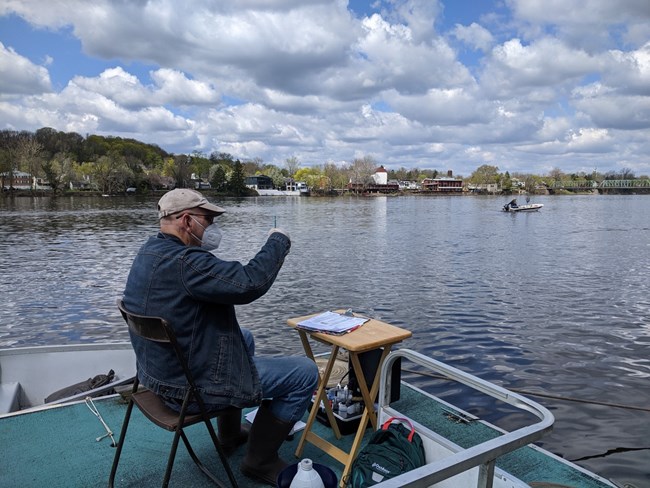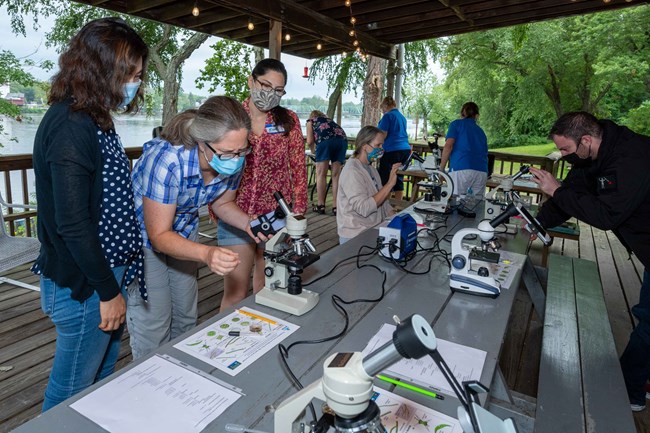Last updated: January 21, 2022
Article
New Opportunities at SPLASH Delaware River Floating Classroom

Content submitted by: Dr. Allison Brown, SPLASH Delaware River Floating Classroom
SPLASH Delaware River Floating Classroom, an educational non-profit located on the Lower Delaware Wild and Scenic River, is excited to share two developments this year: its Citizen Science program and a new class for the public.

Stephen Harris
The SPLASH Citizen Science program was expanded this year to include participation in the StreamWatch program of The Watershed Institute. Monitoring of chemical parameters (dissolved oxygen, pH, Nitrate, Phosphate, turbidity) is now conducted each month by team members at four sites: one on the main stem Delaware River, two on the DR tributary Alexauken Creek, and one on DR tributary Swan Creek. The data that is collected is submitted to the Watershed Institute for inclusion in the Millstone Watershed Water Quality Report Card. The program is intended to educate the public and promote stewardship.

Allison Brown
Curriculum for a new class on Phytoplankton was developed by Dr. Allison Brown (SPLASH Science Director) and Dr. Gabriela Smalley (Associate Professor of Geological and Marine Sciences, Rider University) with funding support from the Lower Delaware WSR Management Council, and the National Park Service. The class, entitled “Phytoplankton: Jewels of the Delaware River”, aims to teach students of all ages about the diversity of freshwater phytoplankton in the Lower Wild and Scenic Delaware River and the ecological significance of these organisms in the aquatic food chain. Students can peer into the microscopic world of the river and, with the aid of cell phones, identify and photograph the organisms they discover.
